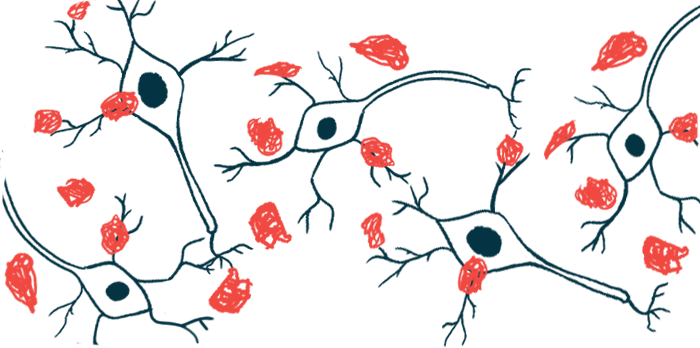Simulations uncover mechanisms in alpha-synuclein protein buildup
Salty, crowded cell milieus may favor toxic protein clumps in Parkinson's

The presence of salt or a molecular crowd may make it more likely for the alpha-synuclein protein, which forms toxic clumps in the brains of people with Parkinson’s disease, to aggregate, or build up, into droplets, according to computer simulations run by researchers in India.
Understanding how alpha-synuclein behaves, particularly when it carries mutations that change its shape, could have implications for developing novel treatments that break apart protein aggregates or even prevent them from forming.
“Our study focused on normal alpha-synuclein and identified key sites within the protein that are crucial for aggregation,” Jagannath Mondal, PhD, who led the study from the Tata Institute of Fundamental Research, said in a press release.
“Inherited mutations in alpha-synuclein are thought to significantly increase the likelihood of aggregation. These mutations, involving minor alterations to protein sequence, highlight the importance of understanding the molecular basis of this process,” Mondal added.
The study, “Modulation of [Alpha]-Synuclein Aggregation Amid Diverse Environmental Perturbation,” was published in the journal eLife.
Investigating the mechanisms underlying Parkinson’s disease
Unlike most proteins with a fixed shape, alpha-synuclein is flexible, adapting its shape as needed. In Parkinson’s, disordered single units of the alpha-synuclein protein will begin building up into toxic clusters of a few units.
Over time, these clusters form thread-like fibers that exhibit properties similar to phase-separated liquid droplets of two unmixable liquids — “the phenomenon you see if you mix oil and water,” said Abdul Wasim, a PhD candidate who served as the study’s lead author.
“A growing body of evidence has established a connection between intrinsically disordered proteins and liquid-liquid phase separation,” Wasim said.
Research has shown that alpha-synuclein can undergo such processes — and that the clumping of the protein is “influenced by crowding from nearby molecules,” according to the press release.
But, Mondal said, trying to determine exactly how these interactions work has been challenging, “making the study of protein aggregation impractical even with cutting-edge software and hardware.”
Here, the team used computer simulations to observe how alpha-synuclein would behave in a complex environment. They found that, when the protein is in water, about 60% of its chains, or series of amino acid building blocks, remain free and don’t participate in aggregation into clusters.
“In water, [alpha-synuclein] does not possess a strong and spontaneous self-aggregation tendency,” the researchers wrote. However, adding in large molecules to simulate the crowded milieu of cells caused alpha-synuclein to aggregate, mimicking what happens in Parkinson’s.
In the presence of salt, a tendency is observed for these smaller aggregates to coalesce, giving rise to larger [alpha-synuclein clumps], albeit in reduced numbers. … The larger the surface tension, the higher is [the] tendency of the protein to form aggregates.
Adding salt to the virtual environment also encouraged alpha-synuclein to form clumps. But while a molecular crowd favored aggregation due to randomness and disorder (entropy), a salty environment increased surface tension, making the droplets become cramped, or uncomfortably small. Surface tension is like a skin that forms on the surface of liquids, caused by the cohesive forces between molecules.
“In the presence of salt, a tendency is observed for these smaller aggregates to coalesce, giving rise to larger aggregates, albeit in reduced numbers,” the researchers wrote, adding that “the larger the surface tension, the higher is [the] tendency of the protein to form aggregates.”
Salt, crowder molecules both found to ‘enhance’ alpha-synuclein protein buildup
According to Wasim, the findings shed new light on the mechanisms underlying the processes in Parkinson’s disease.
“These results suggest that both crowder molecules and salt enhance the aggregation of alpha-synuclein,” Wasim said.
“Irrespective of the factors causing the aggregation, the interactions that drive the formation of droplets remain the same,” Wasim added.
The researchers also found that while such interactions occur in “a delicate balance between molecular grammar and environment-dependent nuanced aggregation,” they are established by the same amino acids, or residues, irrespective of whether crowder molecules or salt were present.
“We think that if these residue-level interactions can be disturbed then the stability of the formed droplets might be affected in such a way that they might dissolve spontaneously,” the researchers wrote. Such work inches toward a better understanding of the mechanisms of Parkinson’s that could lead to potential treatments.







